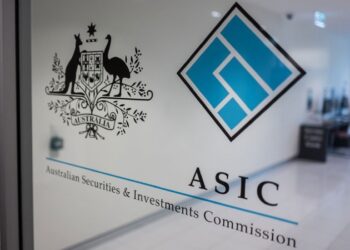Australia’s GDP grew by 0.2 per cent in the third quarter of 2023, according to the national accounts released by the Australian Bureau of Statistics (ABS) on Wednesday.
This was below market expectations for 0.5 per cent growth over the quarter and down from 0.4 per cent growth in Q2 2023. GDP rose by 2.1 per cent over the year, above expectations of 1.8 per cent growth, in part due to upward revisions for Q4 2022 and Q1 2023.
“This was the eighth straight rise in quarterly GDP, but growth has slowed over 2023,” commented ABS head of national accounts Katherine Keenan.
“Government spending and capital investment were the main drivers of GDP growth this quarter.”
HSBC chief economist Paul Bloxham said the latest figures provide “clear evidence” that monetary tightening is working, “largely through its impact on the consumer”. Household consumption was flat in Q3 and rose by only 0.4 per cent on an annual basis.
“At the same time, inflation still remains too high and … the RBA is likely to remain concerned about this,” Mr Bloxham noted.
“A particular concern has been very weak productivity, which combined with rising wages growth, has meant that unit labour costs are rising too strongly to be consistent with its 2–3 per cent inflation target.”
Measured labour productivity rose 0.9 per cent quarter-on-quarter but fell by 2.1 per cent year-on-year.
“This left nominal unit labour costs down from the peak, but still well above what is consistent with the RBA’s inflation target,” said Mr Bloxham.
“We see the RBA holding its cash rate steady at 4.35 per cent through 2024, as growth remains subpar and the economy slowly disinflates.”
AMP deputy chief economist Diana Mousina agreed that the GDP figures indicate that interest rate hikes are having an impact on the economy.
“The data is a touch higher than the RBA’s latest forecasts released in November because historical growth was revised up slightly but wouldn’t change the RBA’s outlook for 2024,” Ms Mousina said.
“We still see economic growth undershooting the RBA’s projections in 2024, which is also why we expect interest rate cuts to start from mid-2024 but are also mindful that the RBA’s hawkishness in recent months means that there could be the chance of another hike in February, following the December quarter inflation figures in late January.”
In its November statement on monetary policy, the RBA forecast that GDP would grow by 1.6 per cent in 2023, 2.0 per cent in 2024, and 2.4 per cent in 2025.
Commenting on the national accounts on Wednesday, Treasurer Jim Chalmers said the Australian economy is “slowing in expected ways as an inevitable consequence of higher interest rates and international uncertainty”.
“We have known for some time that the combination of high interest rates, high but moderating inflation and continuing global uncertainty, including the downturn in the Chinese economy, would slow growth in our economy – and we expect to see some further moderation to annual growth over the year ahead,” he said.
But Dr Chalmers suggested that “welcome and encouraging progress” is being made in the Australian economy more broadly.
“Inflation is moderating, wages are rising with two consecutive quarters of real growth, the gender pay gap is the smallest it’s ever been, unemployment has a three in front of it with faster jobs growth since we were elected than in any major advanced economy, we’ve delivered the first surplus in 15 years and much smaller forecast deficits in the coming years mean much less debt and tens of billions of dollars saved in interest costs,” he said.
Additionally, the Treasurer pointed out that Australia’s economy grew faster than most of the major advanced economies in the year to September, including Germany, the United Kingdom, France, Canada, and Italy.






